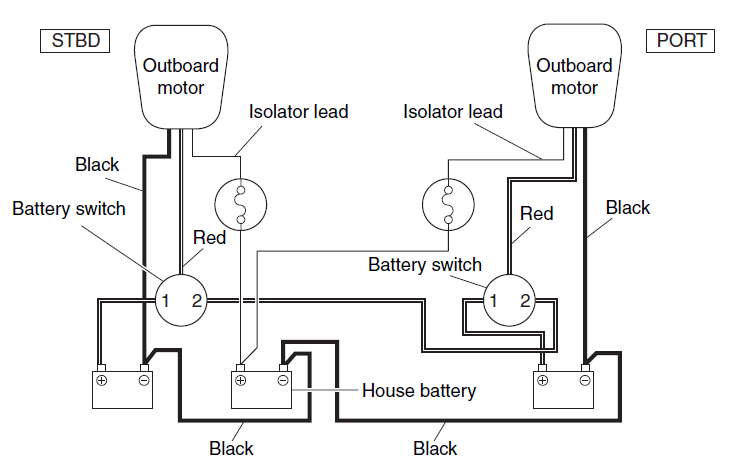Hi,
I have a new boat boat with twin engine Yamaha F200 (2021). Each engine has a crank battery and then there's a house battery to run the electronics on boat, fridge, livewell etc. It is currently wired so each engine charges it's respective crank battery and only the starboard engine is set up with a VSR/ACR to charge the house battery which is a larger AH to the crank battery. I believe there's a better way to wire up the system.
Is it more advantageous to purchase the additional yamaha wiring harness that I believe will connect to these engines for the purpose to charge the house, is this better than using a VSR/ACR? Could someone explain to me how the charging system works on an F200 with regards to charging the crank and then house battery.
I assume it also makes sense to use the charging capabilities of both engines to charge the larger house battery than just the one engine?
Any advice is greatly appreciated.
I have a new boat boat with twin engine Yamaha F200 (2021). Each engine has a crank battery and then there's a house battery to run the electronics on boat, fridge, livewell etc. It is currently wired so each engine charges it's respective crank battery and only the starboard engine is set up with a VSR/ACR to charge the house battery which is a larger AH to the crank battery. I believe there's a better way to wire up the system.
Is it more advantageous to purchase the additional yamaha wiring harness that I believe will connect to these engines for the purpose to charge the house, is this better than using a VSR/ACR? Could someone explain to me how the charging system works on an F200 with regards to charging the crank and then house battery.
I assume it also makes sense to use the charging capabilities of both engines to charge the larger house battery than just the one engine?
Any advice is greatly appreciated.




Comment